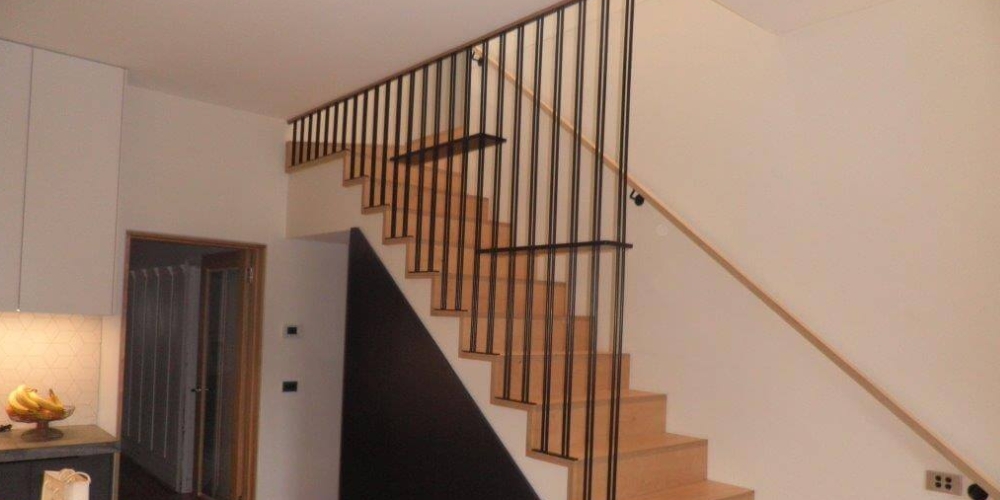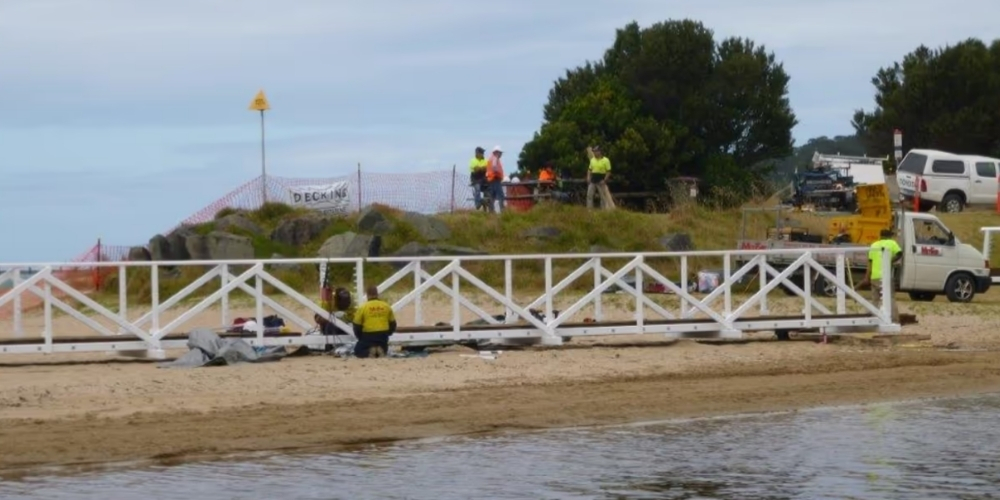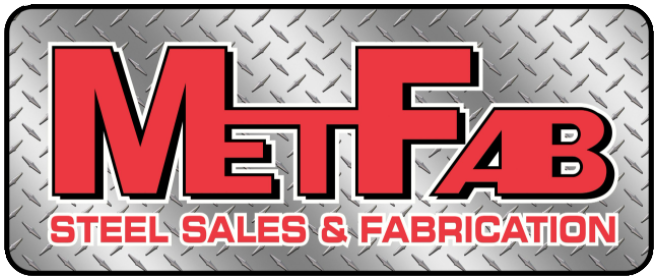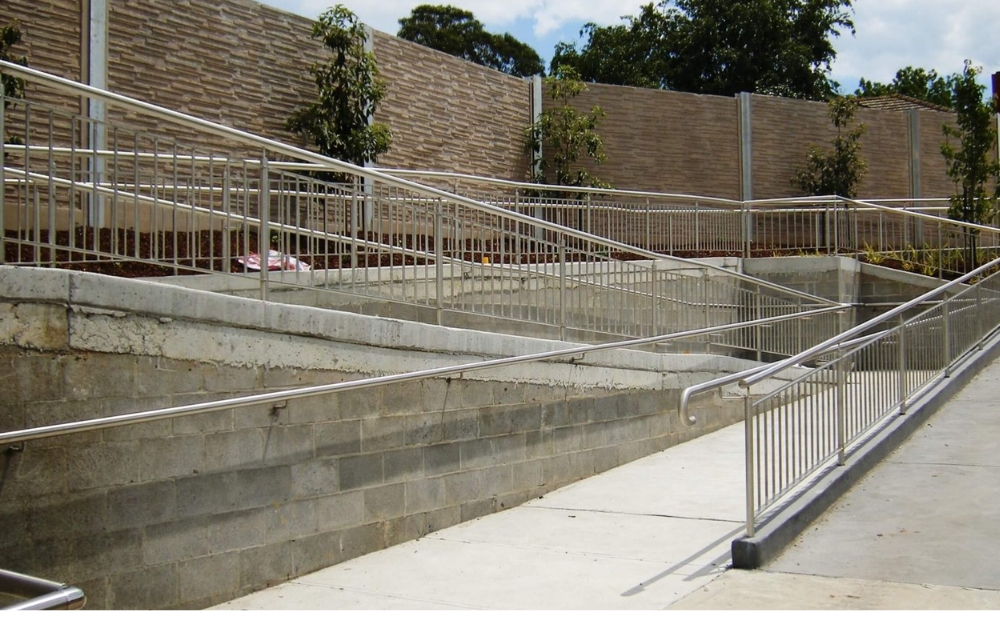What Are the Different Types of Metal Handrails?
Handrails all look the same, but do you know that different types of metals are used to make them? Beyond their apparent role as functional safety features, handrails are a testament to the marriage of form and function in architectural design.
The choice of metal not only influences the aesthetics but also plays a crucial role in the durability and maintenance of these structures.
Where Are Handrails Often Found?
Handrails are indispensable in various architectural and public spaces, providing structural support and safety features. Here's a rundown of the formal and functional locations where handrails are commonly found:
- Staircases: Handrails go hand in hand with staircases in residential and commercial buildings, ensuring a safe transition between floors.
- Balconies: Handrails are an architectural feature that provides aesthetic appeal to balconies while serving as a vital safety precaution for people who love looking out over the city.
- Bridges: Handrails are incorporated into bridges in the field of infrastructure to improve pedestrian safety and confidence when navigating these elevated structures.
- Ramps: Especially inaccessible areas, ramps include railings to make it easier to navigate, accommodate people using mobility assistance, and provide stability for everyone.
- Public Spaces: Handrails are deliberately included into parks and plazas to improve general safety and act as navigational aids in regions with uneven terrain.
- Transportation: Handrails are installed on buses tra, ins, and other public vehicles to give passengers a steady grip while moving suddenly.
- Buildings and Entrances: Handrails help ensure smooth mobility within buildings, especially in places with varying elevations, lobbies, and entrance areas.
- Restrooms: Handrails by sinks and toilets provide extra support for people with different mobility needs in restrooms that are accessible design projects.

Most Common Materials Used to Fabricate Handrails
Brass
Brass handrails provide an elegant and timeless appearance. Brass railings, distinguished by their warm golden colour, can add a hint of grandeur to interior spaces. Brass naturally acquires a patina with age, which adds to its character. Brass railings have a distinctive look and go well with old and modern designs, but they may need to be polished sometimes to keep their shine. They are a popular option for anyone looking for a balance between elegance and versatility because of their malleability, which permits elaborate elaboration.
Wrought Iron
One of the main characteristics of wrought iron railings is its classic elegance and strength. Wrought iron handrails are made by a labour-intensive process that involves heating and shaping, and they frequently have elaborate designs that lend a touch of elegance to their usefulness. They are frequently selected for their timeless, ornamental appeal and strength, which qualify them for indoor and outdoor uses.
Stainless steel
Handrails made of stainless steel are the pinnacle of style and functionality. Stainless steel railings are perfect for outdoor installations where exposure to the weather is a factor because they are resistant to rust and corrosion. Their sleek, simple appearance goes well with modern architectural styles, and the strength of the material guarantees long-term durability with little upkeep.
Aluminium
Aluminium handrails are a contemporary option for home and business applications since they are strong and lightweight. Aluminium railings are an excellent choice for outdoor installations because of their reputation for being corrosion-resistant and low-maintenance. They can be used in various design styles because of their versatility, and their affordability and simplicity of installation make them popular choices.
Glass
Glass handrails give areas a feeling of transparency and openness. Glass railings are a common feature of modern design, providing unhindered vistas without sacrificing security. Usually, wooden or metal framing supports the glass panels, giving them solidity. Glass railings are popular in contemporary residential and commercial buildings because they add to an airy and modern image, even if they need to be cleaned frequently to keep their clarity.

Why Does the Type of Materials Used on Handrails Matter?
Safety
The kind of material utilised for railings has an immediate effect on safety. Reliable support is provided by sturdy materials like wrought iron and stainless steel, which lowers the possibility of accidents, particularly in locations with stairs or raised platforms. Selecting a robust material guarantees the handrail's stability over time, providing a safe hold for those traversing through areas.
Durability and Maintenance
The resistance of various materials to wear, corrosion, and environmental influences varies. Selecting materials with long-lasting qualities, such as aluminium or stainless steel, lowers the frequency and expense of maintenance. For average people in particular, this is significant because it will save them time and money on maintaining their living areas.
Aesthetics and Style
A space's overall appeal is greatly influenced by the material used for railings. Glass and brass are two elegant and sophisticated materials that can improve the aesthetic appeal of public spaces like residences. People can construct a room that reflects their tastes and preferences by selecting materials that complement their style and the overall design of the area.
Adaptability to Environments
The surroundings must be taken into account when choosing handrail materials. Materials resistant to rust and corrosion, such as aluminium or stainless steel, are sensible options for outdoor areas exposed to the elements. This guarantees that the handrails will not deteriorate due to weather, maintaining their integrity and aesthetic appeal while offering reliable operation.
Cost-effectiveness
It is imperative to consider the upfront and ongoing costs of handrail materials. Even though some materials like wrought iron cost more upfront, they may be more affordable over time due to their durability and low maintenance needs. Individuals can make well-informed judgements that align with their budgetary concerns by being aware of the costs involved.
Accessibility
Accessibility may be impacted by the material of the handrails, particularly for people with mobility issues. An environment is made more accessible by materials set at suitable heights and providing a comfortable grip. Everyone should consider this since it guarantees that areas are inclusive and suitable for those with various abilities.
FREQUENTLY ASKED QUESTIONS
Conclusion
So, there you have it – handrails may seem simple, but the metals used in making them bring a lot to the table. Each metal has its style and strength, from old-school wrought iron to modern stainless steel.
Next time you stroll up a staircase or lean on a balcony, take a moment to appreciate the handrail. It's not just there for looks – it's keeping you safe and steady.
If you're thinking about handrails for your home or a project, consider the variety of materials available. Think about the look you want and how durable you need it.
So, go on, make your spaces not just safe but stylish, too. Your handrails can be more than just a support – they can be a statement. Choose wisely and make every step a secure and stylish one!


